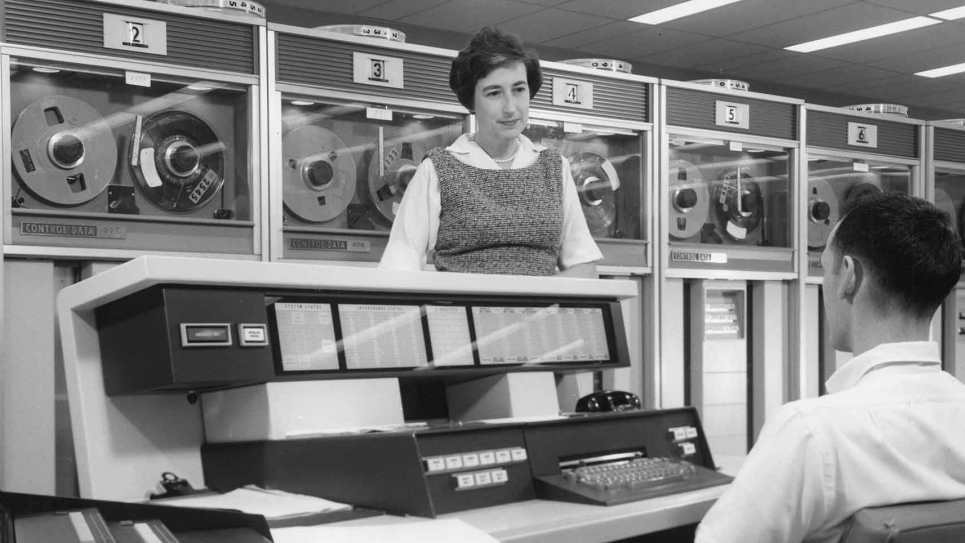
Margaret Butler programmed the first digital computers at Argonne National Laboratory in the early 1950s, helped design subsequent ones, and contributed to simulations of nuclear power reactors. Image: Argonne National Laboratory
The ALCF was established at Argonne National Laboratory in 2006 as part of a DOE initiative dedicated to enabling transformational advances in science and engineering by providing the most powerful supercomputers in the world for open scientific research.
The facility has grown leaps and bounds since its inception, developing and deploying leading-edge computing systems with unprecedented capabilities, while fostering an ever-growing user community that is pushing the boundaries of fundamental discovery and understanding in a broad range of scientific disciplines.
Supported by the Advanced Scientific Computing Research (ASCR) program within DOE’s Office of Science, the ALCF is one half of the DOE Leadership Computing Facility, which deploys to diverse high-performance computer architectures for open science (one at Argonne and one at Oak Ridge National Laboratory).
In 1949, Argonne physicists needed computers to solve enormously complex mathematical problems. But these kinds of computers were not yet available commercially, so they built their own. Thus began the Argonne tradition of innovation in providing leading computing resources to the scientific community.
The seedbed for such groundbreaking software as MPI, PETSc, PVFS, GridFTP, and Cobalt, and as an essential partner in the development of some of the world’s premier supercomputers, Argonne’s historic stronghold at the forefront of scientific computing is undisputed.